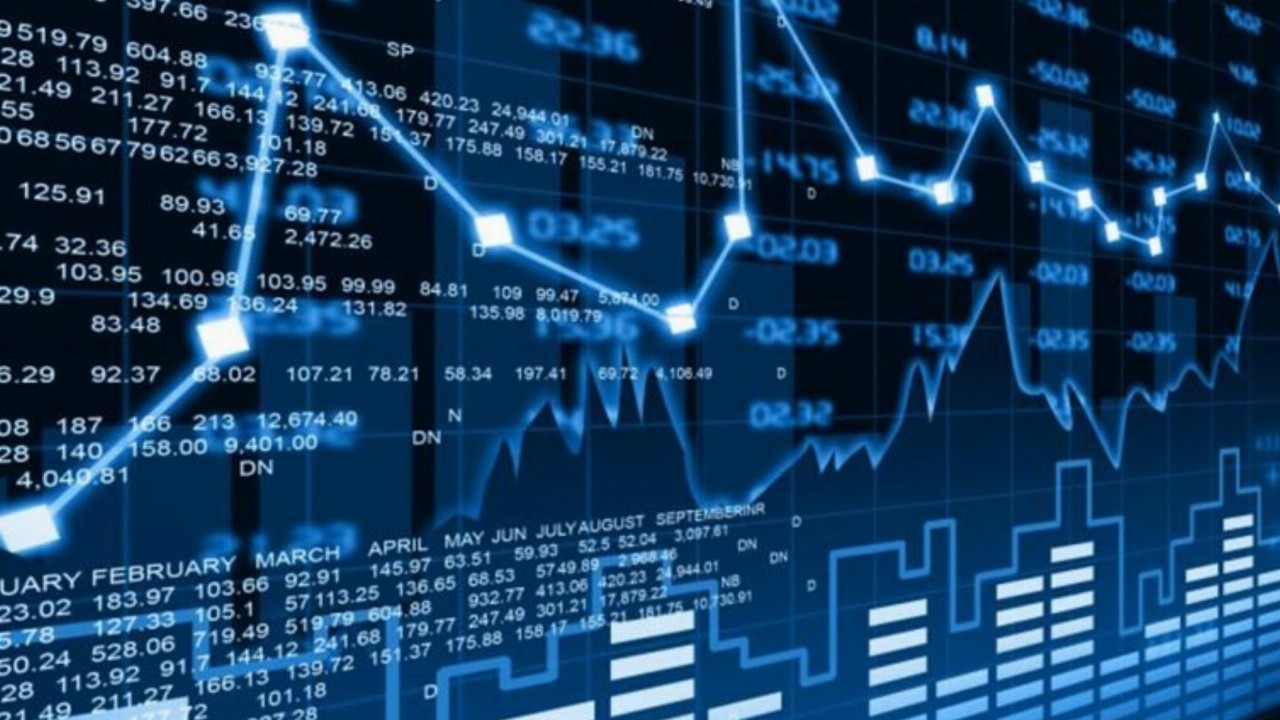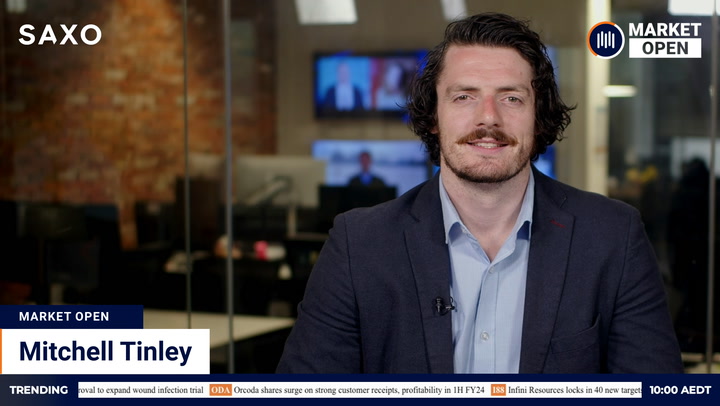A volatile night on Wall Street points to further pain for Australian investors ahead of tomorrow’s market holiday.
The Dow tumbled more than 1,100 points before reversing to a late gain. The Nasdaq Composite also closed higher after earlier shedding almost 5 per cent. The S&P 500 briefly entered technical correction territory before joining the rally.
ASX futures dived 92 points or 1.3 per cent. A fall of that scale would push the S&P/ASX 200 towards 7000 for the first time since mid-May.
On commodity markets, iron ore, crude oil and industrial metals declined. Defensive assets such as gold and bonds rallied. The Australian dollar fell towards 71 US cents before a partial recovery.
Wall Street
US stocks plunged as a NATO decision to deploy troops to eastern Europe further unsettled a market already jittery over this week’s Federal Reserve rates meeting. NATO announced it would reinforce its eastern flank as Russian continued to mass troops on its border with Ukraine.
The S&P 500 fell almost 4 per cent before a violent mid-session reversal. The index finished 12 points or 0.28 per cent ahead, only turning positive in the closing minutes.
The Dow Jones Industrial Average closed with a gain of 99 points or 0.29 per cent. The Nasdaq Composite flipped a fall of almost 5 per cent into an advance of 86 points or 0.63 per cent.
The NATO move underlined the threat of a Russian invasion of Ukraine. Russia has reportedly deployed around 100,000 troops along the Ukrainian border. Russian authorities denounced the NATO deployment as an escalation of tensions.
Markets were already on edge over a two-day Fed meeting scheduled to start tonight and finish with a policy update on Thursday morning Australian time. The central bank is expected to clarify the rates outlook for the rest of the year.
A market rout that started this year with highly-priced growth stocks has broadened in recent sessions to encompass the entire market. Ten of eleven sectors shed more than 2 per cent at the night’s nadir. Until late in the session, just two of the Dow’s thirty component companies avoided the bloodshed.
“When a bear market comes, it doesn’t spare the good stocks or the bad stocks. I mean, they all go down,” Wharton School finance professor Jeremy Siegel told CNBC.
Wall Street’s “fear gauge“, the VIX, hit its highest level since November 2020. The Russell 2000 index of small caps traded in bear market territory, defined as a decline of more than 20 per cent from a market peak.
The speed and scale of the declines have pushed technical indicators towards “oversold” territory, according to JPMorgan’s head of global strategy, Marko Kolanovic.
“The recent pullback in risk assets appears overdone, and a combination of technical indicators approaching oversold territory and sentiment turning bearish suggest we could be in the final stages of this correction,” he told clients.
“With valuations now less demanding, technical indicators having recently reached oversold RSI territory and positioning seeming to have adjusted, it feels like most of the high volatility upward move in yields could be behind,” he added.
Australian outlook
The final figures on Wall Street mask the intensity of the volatility overnight. A wild session saw the major indices log the deepest intraday falls of this year’s retreat before a late recovery.
The mid-session reversal was typical of the sort of capitulation-and-rebound action experienced traders look for at market bottoms. However, prudent investors may await further confirmation.
ASX futures ended the night session well off session lows. Australian traders face a difficult decision whether to hold over the Australia Day public holiday. While today’s US action looks promising, uncertainty over the Fed’s rates outlook persists. Wall Street will trade twice before the ASX reopens on Thursday.
The US recovery was led by the consumer discretionary sector +1.21 per cent, energy +0.55 per cent and industrials +0.54 per cent.
Defensive stocks copped the worst of the selling – the reverse of yesterday’s ASX action. US utilities fell 1.03 per cent, healthcare 0.37 per cent and consumer staples 0.35 per cent.
Today’s domestic economic highlight, quarterly inflation data at 11.30 am AEDT, may not have the impact it would have in a more stable market. The consumer price index is expected to show prices increased 1 per cent in the second quarter. A surprise in either direction would have implications for the rates outlook. A separate survey on business confidence is due for release at the same time.
Fortescue Metals, Beach Energy, St Barbara and Iluka Resources were scheduled to release quarterly updates today.
IPOs: Felix Gold was slated to list at 11.30 am AEDT. The explorer is targetting gold in Alaska.
The dollar was dragged lower by a “flight to safety”. The Aussie fell 0.62 per cent to 71.43 US cents as forex traders bought the greenback.
Commodities
Oil fell to its lowest in more than a week as risk assets sold off. Brent crude settled US$1.62 or 1.8 per cent in the red at US$86.27 a barrel.
“Crude oil had become technically overbought and was getting due for a trading correction, which has started to unfold,” Colin Cieszynski, chief market strategist at SIA Wealth Management, told MarketWatch. “The catalyst for this appears to be a general rotation of capital out of equities and commodities and into defensive havens like bonds and gold.”
Gold attracted haven buying as risk assets slumped. Metal for February delivery settled US$9.90 or 0.5 per cent ahead at US$1,841.70 an ounce. The NYSE Arca Gold Bugs Index fell 0.78 per cent.
“Gold is clearly finding favor as portfolio insurance,” Adrian Ash, director of research at BullionVault, wrote.
Iron ore declined ahead of holidays in China and the start of the Beijing Winter Olympics. The spot price for ore landed in China fell US$3.70 or 2.7 per cent to US$133.70 a tonne.
BHP and Rio Tinto pared their losses in the US following solid falls in London trade. BHP‘s US-listed stock finished 0.55 per cent lower after its UK-listed stock sank 3.71 per cent. Rio Tinto shed 1.49 per cent in the US after losing 3.54 per cent in the UK.
Copper dropped 2.5 per cent on Comex to US$4.413 a pound. Nickel plunged 6.8 per cent on the London Metal Exchange. Copper shed 2.2 per cent, aluminium 0.3 per cent and zinc 1.3 per cent.







